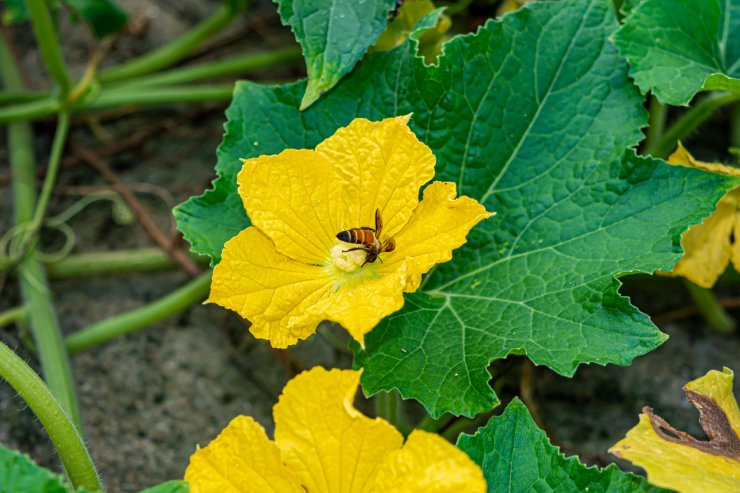
Small honey bee on a pumpkin flower.
Your pumpkin plants will proliferate only through pollination. You can count on the bees to do it, or you can lend a hand to ensure your female flowers are pollinated properly. Pumpkins are self-pollinating: they produce both male and female flowers. You can tell the difference between them fairly easily: The male flower is shorter than the female flower and usually blooms in a cluster with other male flowers; the female flower has a rounded “fruit” at it base. That’s the ovary—what will eventually become the pumpkin.
Sometimes female flowers will bloom before there are any male flowers. You can gently remove those. Once you have both male and female flowers blooming, keep an eye on your pollinator buddies, the bees. If you aren’t sure the bees are getting to the flowers (if you don’t see any young fruit starting from the base of the female flowers), you can remove a male flower from the plant, use a soft-bristled brush (like a makeup brush or a soft small paintbrush) to remove the pollen from the male flower, and brush it gently on the female flower’s stigma. You also have the option of creating a natural brush from the male flower; just remove all the petals and brush the pollen-laden anther on the stigma.
How do you ensure that your pumpkin plants are properly pollinated? Do you rely only on the bees for pollinating—or do you have to help your pumpkin plants with pollination? Please tell us how you handle this.


 Previous
Previous

